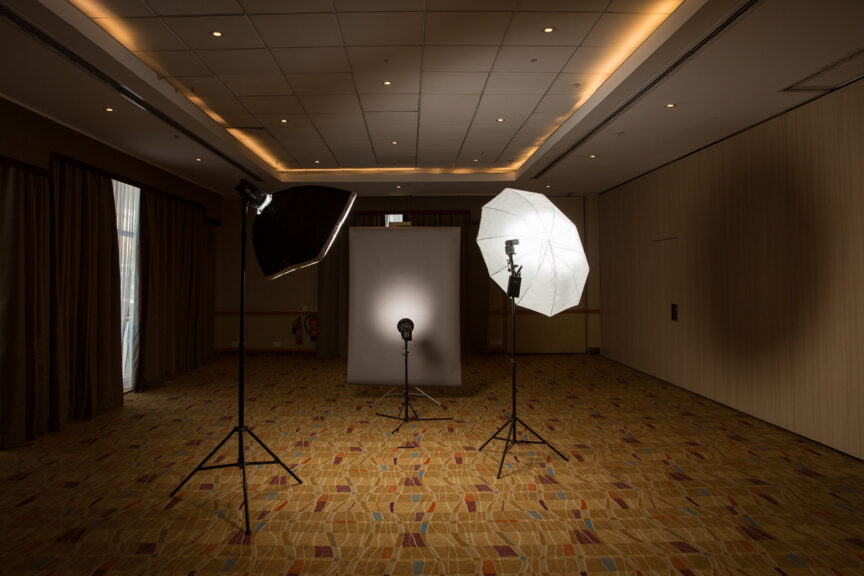A recent experience reminded me once again of the importance of two particular aspects of a corporate portrait photography session, namely space and time. In fact as these two elements are inextricably linked, we can refer to them as a continuum.
Setting aside the fourth dimension for a moment, on this particular occasion I was shown into a vast board room, which would have been perfect except it was mostly filled with immobile boardroom furniture; massive table and countless chairs. At the same time I was told I could only have the room for half an hour, which is approximately how long it would have taken me to set up the lighting kit even if there had been space to do so.
This would have left no time for any photography to happen, let lone the two hours I was booked for. A continuum conundrum, no less.
Thankfully we were able to find an alternative room which, though smaller, had much more clear floor space. It was also available for two hours, which was just about enough – not perfect, as I was booked for three (and could happily have filled them with the shots listed as required), but better than zero minutes by quite a considerable percentage.
Of course when you’re setting up a photo session, coordinating the schedules of everyone involved is often a headache, but it’s worth thinking of the room and the time required as if they were two more people in the schedule. If a room or the time in that room are unavailable, it’s a no-goer.
The time required will depend on how many people are to be photographed and the brief to which I’ll be working (more varieties of poses etc will obviously require more time) and at least 30 minute’s set-up and break-down time should be factored either side of the session.
How much space is needed will depend on whether it’s close head shots or full-length portraits required (full-length requires a great deal more space), but as a rule of thumb for headshots, you need to allow approximately 2.5 – 3m width x 3m length (length being the distance between where I’ll stand and the next wall or immobile obstacle).
This is approximate, but it is a realistic guide. You can easily add another couple of metres to the length for full-length portraits.
The photo on this article shows an example of where I’ve had more space than I knew what to do with (it was in fact one half of a hotel ballroom!), but seeing the set-up gives you some notion of how that space is used.
So remember, when you’re booking all the executives and colleagues for that all-important photo session, don’t forget to plan the room and ring-fence the time. Without those two elements, the space – time continuum breaks down and everything else becomes academic.

